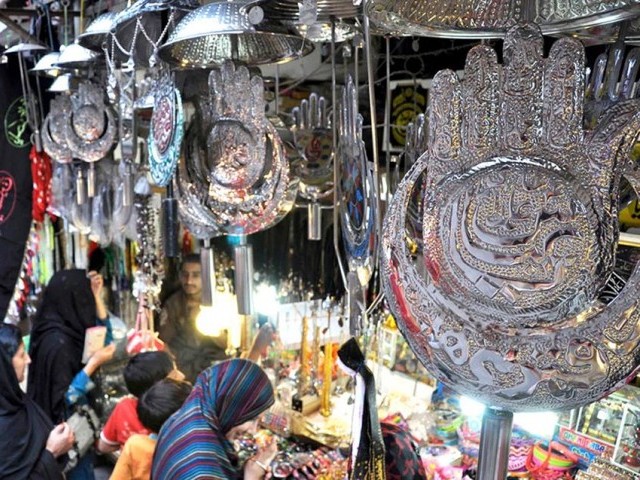According to London-based Edbiz Consulting, the annual trade of religious symbols is estimated to be around $17.5 billion. The largest share of this trade involves Catholics ($4.35 billion), followed by Chinese ($4.11 billion) and Hindus ($4.09 billion). Muslims stand at number five after Christians (excluding Catholics) who buy $2.15 billion worth of religious symbols. Muslims spend $1.93 billion annually on a number of symbols like crescents and jewellery items. The table gives a breakdown of spending on religious symbols by different faith groups in the world.
It is interesting to note that among Muslims, Shia community spends almost half of the amount ($950 million) on religious symbols, although they are only 15% of the total Muslims all over the world. Most of the spending on religious symbols by Sunni Muslims is on different items “marketed” by the Sufis. These include amulets and various stones.
Market for amulets is huge and increasing as time progresses. With the increase in Muslim population in the Western hemisphere, the amulets are being sold through electronic media and other modern means of communication. A lot of money that is raised by Sufi leaders is related with the sale of Islamic symbols like amulets, while other faith groups, especially in the Far East and China, aggressively market amulets through online sales and other traditional ways.
It is estimated that Muslims in Pakistan spend $200 million annually on amulets. Although it is less than 1% of the total Gross Domestic Product of the country, Edbiz Consulting estimates that the total amount spent on the religious symbols in Pakistan is about 1.1% of the GDP of the country. This amount is actually not accounted for in the national accounts as virtually all of it lies in the informal sector, for which there is no official estimate available.
Business case to develop market for Pakistani amulets
India and China are big in terms of spending on religious symbols, (more than $6 billion in total) but Pakistan has yet to develop a religious symbol that could be marketed nationally and internationally. There are a number of world-known shrines like Data Ganj Bakhsh in Lahore, Sultan Bahu, Bullhay Shah and many more. If distinct religious symbols are developed around these shrines with the help of the custodians of these shrines, it could prove to be a multi-billion business proposition. For example, it might not be a bad idea to develop an amulet of knowledge around Data Ganj Bakhsh, which could be used for those who would like their children to progress in studies. A Sultan Bahu amulet could be marketed to promote obedience to parents. A Bullhay Shah amulet may represent peace.
If an internationally acclaimed designer is encouraged to develop such amulets with the help of the custodians of these shrines, which are then marketed through an aggressive campaign, a multi-billion market for such amulets is not entirely unrealistic. A political party like may wish to adopt these amulets for fund-raising and for promoting allegiance to the party.
/149

